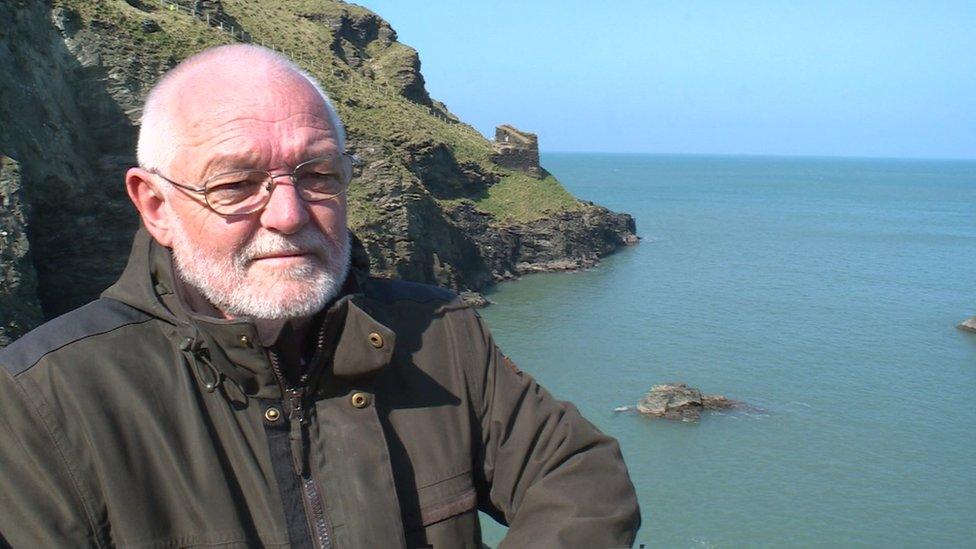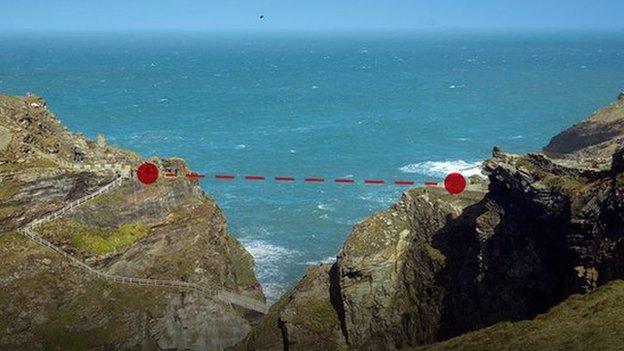Tintagel Castle Merlin carving sparks 'Disneyfication' row
- Published

The carving of Merlin took three months to complete
A rock carving of Merlin at a coastal cave reputedly linked to the legend of King Arthur has been branded a "Disneyfication" of the site.
English Heritage, which commissioned the artwork, has been accused of "commercialising" Tintagel Castle, the legendary birthplace of King Arthur.
Cornwall councillor Bert Biscoe has written to the charity to complain about the "comic-book face".
It said the carving would help visitors understand the history of the site.
'Cornwall not Disneyland'
The work sits at the mouth of the so-called Merlin's Cave, where, according to legend, the wizard took Arthur as a baby to keep him safe.
In his letter, independent councillor Mr Biscoe also complained about a proposed 8ft (2.45m) model of an Arthurian knight which is set to be bolted into rocks near the castle.

Independent councillor Bert Biscoe has written to the chief executive of English Heritage
"This is one of the most heavily designated pieces of landscape and archaeology in Britain," he said.
"If we start carving comic book characters into the geology, where do we stop? This is not Disneyland, it's Cornwall."
The carving was finished in February by local craftsman Peter Graham who described the work as "a temporary intervention" which would be eroded by the weather.
Mr Graham hoped the carving would spark people's imaginations and said he had received "overwhelming support" from visitors to the site.
Historic Tintagel
-
AD450-AD650 Tintagel becomes a prosperous and significant site
-
1138 Geoffrey of Monmouth's History of the Kings of Britain linking King Arthur to Tintagel
-
1225-1233 Richard, Earl of Cornwall, begins building the castle on Tintagel headland
-
1600 The site is largely deserted

The history of Tintagel
English Heritage said plans for its "outdoor interpretation scheme" received planning permission last year, and include plans for "several artistic installations inspired by the legends of Merlin, King Arthur and Tristan and Iseult".
"These legends have all had a profound impact on shaping Tintagel, and will help visitors to understand how the site grew and developed over the centuries," it said.
- Published6 August 2015
